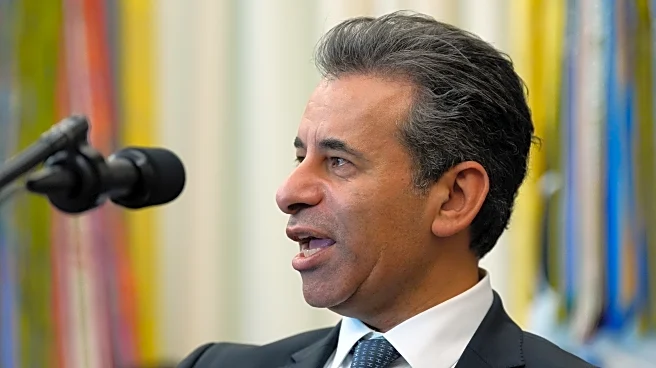What's Happening?
Merck KGaA has entered into an agreement with the Trump administration to significantly reduce the cost of certain fertility drugs used in in vitro fertilization (IVF) procedures. The deal involves Merck's U.S. unit, EMD Serono, providing these drugs at a 73%
discount to the current list price. This agreement is part of the Trump administration's most favored nation (MFN) pricing initiative, which aims to lower drug costs in exchange for relief from U.S. tariffs on pharmaceutical imports. The agreement also includes a commitment from Merck to invest in biopharma manufacturing and research in the U.S. The drugs covered under this deal include Gonal-f, Ovidrel, and Cetrotide, which are essential for IVF treatments and can constitute a significant portion of the procedure's cost.
Why It's Important?
This agreement is significant as it addresses the high costs associated with IVF treatments, which can range from $15,000 to $20,000 per cycle. By reducing the cost of fertility drugs, the deal could make IVF more accessible to a larger number of individuals and families seeking fertility treatments. The Trump administration's MFN pricing strategy aims to lower drug prices across the board, potentially setting a precedent for future pharmaceutical pricing policies. Additionally, the commitment to invest in U.S. biopharma manufacturing could bolster domestic production capabilities and create jobs, aligning with broader economic and healthcare policy goals.
What's Next?
The TrumpRx direct-to-consumer sales channel is expected to launch in January, providing cash purchasers access to the discounted drugs. EMD Serono's new fertility drug, Pergoveris, will be among the first to benefit from the FDA's new Commissioner's national priority voucher program, which expedites the review process for medicines. This could lead to faster availability of new, lower-cost fertility treatments in the U.S. market. The broader implications of the MFN pricing model may influence future negotiations between the government and pharmaceutical companies, potentially leading to more widespread drug price reductions.














